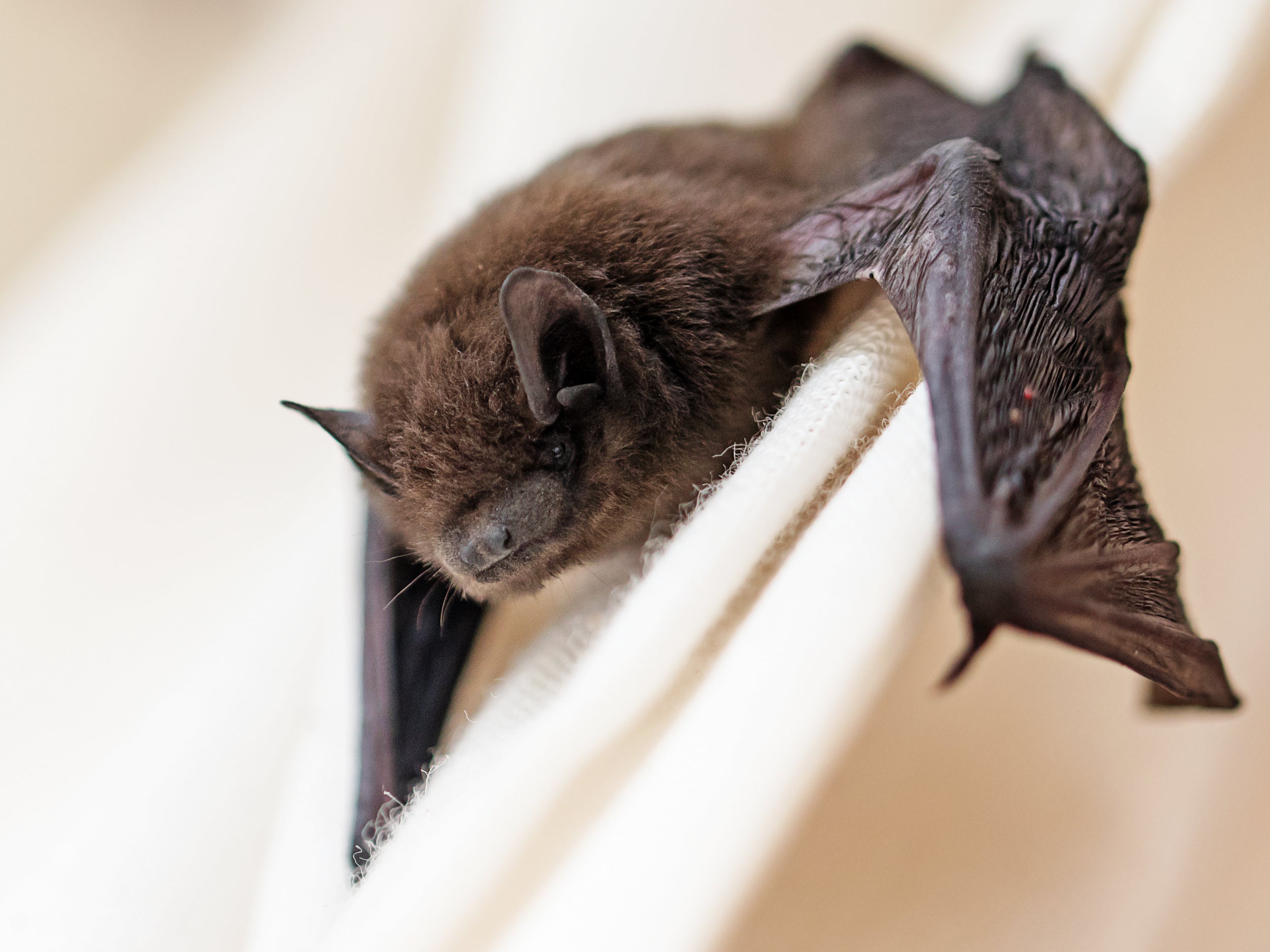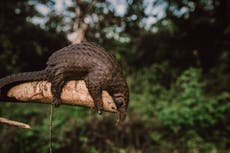Fatal attraction: UK’s smallest bat species drawn to wind turbines
Common pipistrelle bats account for more than half of all bat fatalities across wind farms in Europe, writes Harry Cockburn


One of Europe’s most common bats may be attracted to wind turbines, resulting in higher levels of mortalities close to wind farms, new research suggests.
The common pipistrelle bat - considered a “microbat” due to its tiny size - is the smallest and most common bat in the UK, and has an extensive range across Europe.
Researchers from the University of Exeter and University of Sussex monitored the pipistrelles’ activity at 23 British wind farms, as well as at similar control locations nearby which did not have any turbines present.
They found bat activity was a third higher around the turbines than it was at the control locations.
The research team said the reasons for increased activity in the vicinity of wind turbines remains unclear, but possibilities include attraction to the turbines themselves, or the presence of more of the bats’ insect prey around turbines.
“Either way it means the risk of fatality at wind turbines is increased, and probably explains the high fatalities of common pipistrelle bats seen at some wind farms across Europe,” said Dr Suzanne Richardson of the University of Exeter.
Common pipistrelle bats account for more than half of all bat fatalities at turbine sites in Europe.
“We know bats are killed by turbines worldwide, and reducing these fatalities is essential to ensuring a global increase in wind energy with minimal impact on bats,” said Professor David Hosken, also of the University of Exeter.
“To do that, we need to understand whether bats are actively attracted to, indifferent to, or repelled by, the turbines at large wind-energy installations.
“Our findings help explain why environmental impact assessments conducted before the installation of turbines are poor predictors of actual fatality rates.
“Turbines are generally built in areas where bat activity is thought to be low, but this may not be an effective strategy if bats are attracted once turbines are built.
“Ongoing monitoring is required, and measures such as minimising blade rotation in periods of high collision risk are likely to be the most effective way to reduce fatalities.”
The study also monitored soprano pipistrelle bats, a similar, and also common species in the UK.
But the researchers found no conclusive evidence this species is more active around turbines.
Professor Fiona Mathews of the University of Sussex, who led the research, said: “Bat activity at wind farms is very variable.
“During periods of high wind speed, when most energy is generated, bat activity is low and so there is little risk to bats.
“In contrast, there can be high activity at turbines on nights with light winds and warm temperatures. Most of the attraction to turbines appears to be happening on these high activity nights.”
She added: “We have worked with the Statutory Nature Conservation Organisations and industry to produce guidance to help minimise the risks to bats.
“These include stopping blades rotating when no energy is being produced. This is a win-win situation as little electricity generation is lost during these periods.”
Common pipistrelle bats grow to between 3.5 and 4.5cm in length, with a wingspan of up to 25cm. A fully grown adult will weigh just 8 grams. They feed on midges, moths and other flying insects and roost in tree holes, bat boxes and the roof spaces of houses.
The research is published in the journal Scientific Reports.
Join our commenting forum
Join thought-provoking conversations, follow other Independent readers and see their replies
Comments



Bookmark popover
Removed from bookmarks